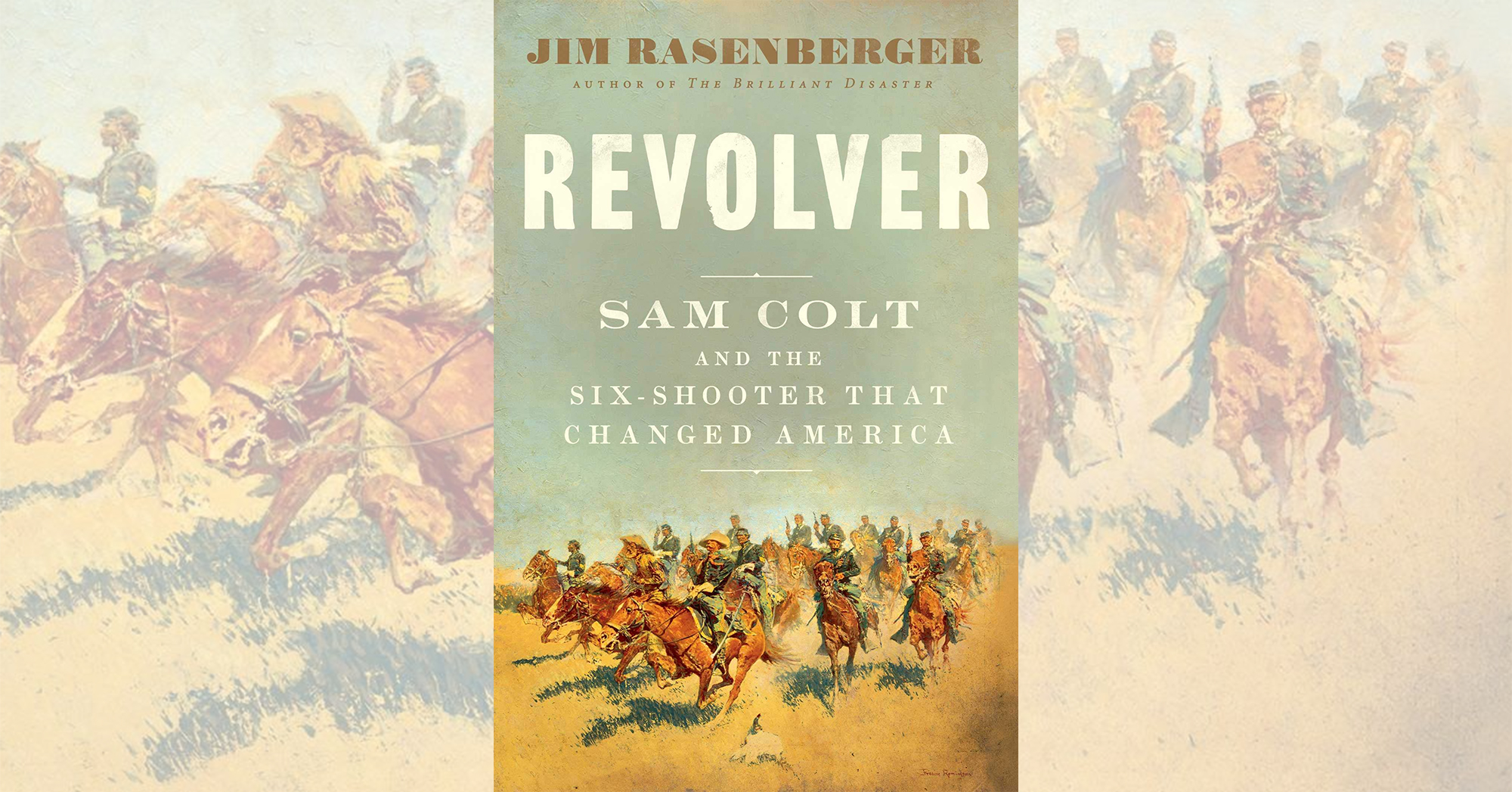Revolver: Sam Colt and the Six-shooter That Changed America, by Jim Rasenberger, Scribner, New York, 2020, $28
America is a nation of inventors, and among them are a select few whose names stand in for the very creations they wrought. Think Morse’s code, Ford’s sedan or Tupper’s ware. The world of firearms boasts more than its share of namesakes, including Gatling, Henry and Winchester. But one name stands out in the pantheon of great American inventors, with resonance right up to the present: Colt.
As the story goes, Samuel Colt conceived his revolutionary revolver mechanism in 1831 while returning stateside from a seafaring voyage his father had hoped would take some of the starch out of his 16-year-old rascal of a son, who was a bit too fond of pyrotechnics, much to the dismay of his schoolmasters. Five years later Sam secured a patent for his “revolving gun,” and in the years that followed Colt became to pistols what Winchester later became to rifles—the inseparable gold standard. Yet by his untimely death at age 47 in 1862 the inventor had sold scarcely more than 400,000 revolvers. The models most closely associated with his name—the 1873 Single Action Army (aka “Peacemaker”) and the M1911—rolled off the line at Colt’s Patent Fire Arms years after their namesake’s passing. And while tens of millions of Americans have since purchased Colt’s iconic revolvers, the inventor himself has remained something of an enigmatic figure. Until now.
“Because he was a man with his own distasteful truths, and heirs willing to bury them, Colt left behind rabbit holes—ellipses, traps—for his future biographers,” writes Jim Rasenberger in the prologue to Revolver. “The problem has not been helped by a spate of Colt biographies that blend verifiable fact with outright fiction, making little attempt to distinguish which is which.” Rasenberger isn’t shy about exposing many of Colt’s “distasteful truths” (financial woes, womanizing, a rumored secret marriage, an illegitimate son, a brother who committed foul murder and then cheated the hangman by killing himself). But his biography is far more than a tell-all. Spanning the period of American history from the War of 1812 to the Civil War, the lively narrative traces Colt’s roller-coaster path from poverty to fortune to bankruptcy and back to fortune. “But it is also—trigger warning—the story of a gun,” quips Rasenberger.
Though the author claims “no agenda other than to tell what honestly happened to Sam Colt, his gun and America in the years 1814 to 1862” and insists “the past is the one place in American life where we can lower our weapons and consider our common heritage,” he can’t help but repeat a few revisionist tropes and stray, albeit briefly, into present-day politics. “It would be naive to believe that the story of Colt and his six-shooter will significantly change anyone’s opinion about guns,” Rasenberger concedes, “but it should at least remind us of how much we all owe to guns, and, for better and for worse, to one gun in particular.”
—Dave Lauterborn





